The Wrack
The Wrack is the Wells Reserve blog, our collective logbook on the web.
The Wrack is the Wells Reserve blog, our collective logbook on the web.
The Reserve held its sixth annual Monarch Rescue yesterday! Two education staff and seventeen wonderfully enthusiastic volunteers of all ages set out in search of monarch butterfly eggs and caterpillars in fields that will be mowed within the next couple of weeks. Select Reserve fields are mowed each year in an effort to maintain this vital habitat, rather than allow it to eventually grow into forest. The mowing also serves to keep invasive plant species in check.
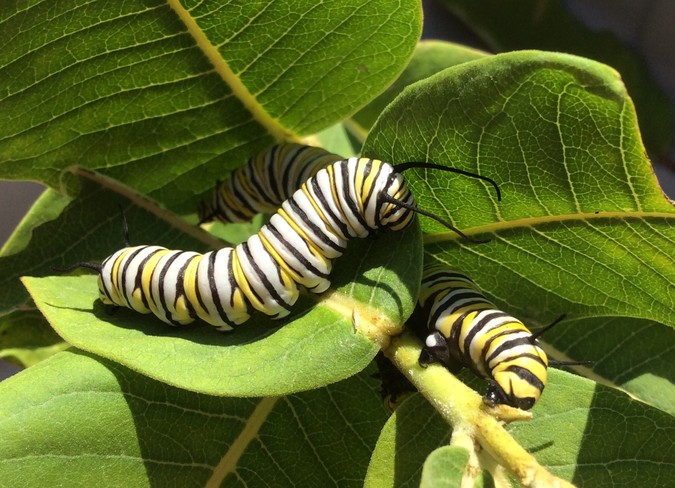
Each year since 2010 (with the exception of 2011, when no rescue was conducted), the Monarch Rescue teams were tasked with combing the fields while inspecting individual milkweed plants to look for signs of monarchs. Any found eggs and caterpillars were then brought to a field not slated for mowing that year. Milkweed leaves with eggs on the underside were stapled to secure milkweed leaf undersides. Caterpillars were moved to secure milkweed plants. The graph below shows the number of eggs and caterpillars found during each of the six rescues.
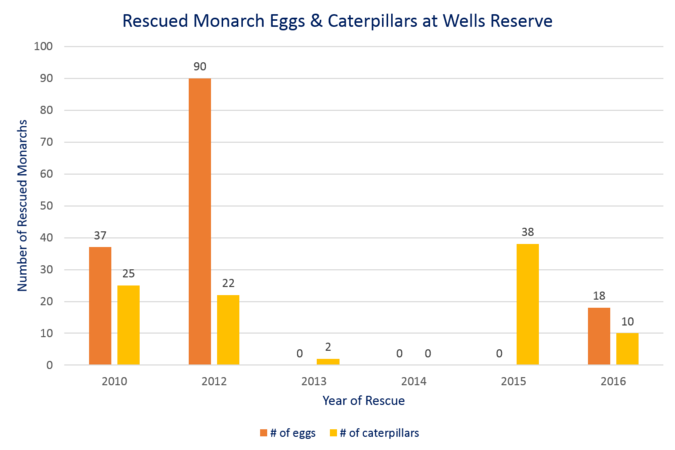
The Reserve's annual late summer effort to save monarch eggs, caterpillars, and chrysalises from the mowers that cut our fields happened last week. The mowing is essential in preventing the fields from growing into forests over time, and also as a management strategy for invasive species.
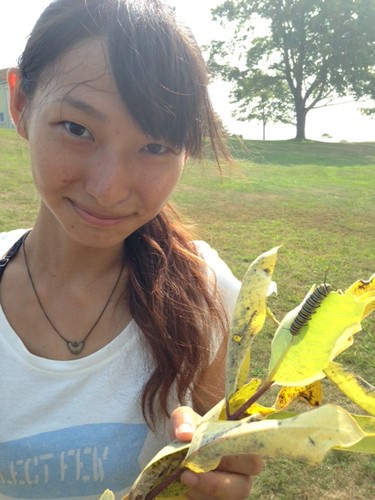
Thanks so much to the eleven volunteers who spent several hours in the warm sunshine combing the ubiquitous milkweed plants for signs of monarchs! We saved 38 caterpillars of all sizes, removing them from the fields that will be mowed within the coming weeks to fields that will not be mowed this year. The smallest of the caterpillars measured less than one inch in length, whereas the largest were several inches long. A handful of monarch butterflies were spotted fluttering over the fields during the rescue mission, providing hope that some of the rescued caterpillars will also reach adulthood.
This past Saturday evening, over 20 community members participated in the "Bats: Friends of the Evening Sky" program offered in partnership with the Center for Wildlife. We all learned about the many myths surrounding bats and the real truths (they don't fly into human hair, there are only 3 species of vampire bats among the over 1,200 species of bats worldwide, and vampire bats do not live in the United States—they live in tropical climates and prey primarily on livestock). 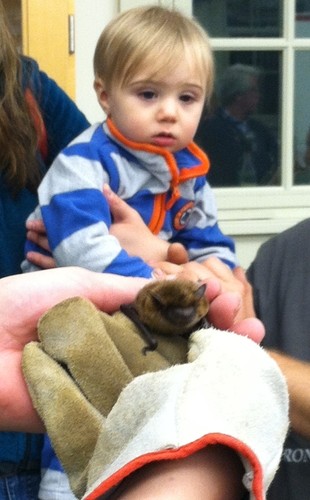
We were amazed to learn, too, that Maine's insectivorous bats eat 1,000 mosquitoes in a single night! The next time a mosquito bites you, think of all the mosquito control bats provide us!
Several weeks ago, a dedicated group of volunteers set out into the milkweed fields to rescue monarch eggs and caterpillars, just before the Reserve's annual mowing. This is the third annual Monarch Rescue effort, and this year the results were sobering. After nearly three hours of searching the undersides of milkweed leaves, our team of fourteen only came up with two caterpillars (and one already empty monarch egg case). In 2010, 37 eggs and 25 caterpillars were rescued by our team, and in 2012 we rescued 90 eggs and 22 caterpillars (we didn't have a Rescue in 2011).
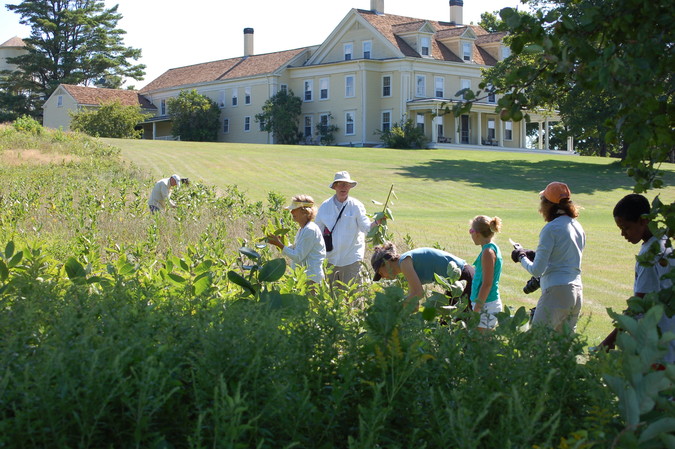
Scientists in the monarch's wintering grounds in Mexico documented a 59 percent decrease in butterflies last year. Loss of habitat, drought, the use of pesticides, and climate change are all thought to play a role.